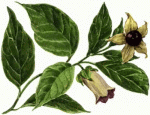Botany
|
29 january 2015 06:05:52 |
| Synchrotron based phase contrast X-ray imaging combined with FTIR spectroscopy reveals structural and biomolecular differences in spikelets play a significant role in resistance to Fusarium in wheat (BMC Plant Biology) |
|
Tweet Background:
Fusarium Head Blight (FHB), a scab principally caused by Fusarium graminearum Schw., is a serious disease of wheat. The purpose of this study is to evaluate the potential of combining synchrotron based phase contrast X-ray imaging (PCI) with Fourier Transform mid infrared (FTIR) spectroscopy to understand the mechanisms of resistance to FHB by resistant wheat cultivars. Our hypothesis is that structural and biochemical differences between resistant and susceptible cultivars play a significant role in developing resistance to FHB.
Results:
Synchrotron based PCI images and FTIR absorption spectra (4000?800?cm?1) of the floret and rachis from Fusarium-damaged and undamaged spikes of the resistant cultivar `Sumai3?, tolerant cultivar `FL62R1?, and susceptible cultivar `Muchmore? were collected and analyzed. The PCI images show significant differences between infected and non-infected florets. However, no pronounced difference between non-inoculated resistant and susceptible cultivar in terms of floret structures could be determined due to the complexity of the internal structures. The PCI images revealed significant differences between infected and non-infected rachis of different wheat cultivars. The FTIR spectra showed significant variability between infected and non-infected floret and rachis of the wheat cultivars. The changes in absorption wavenumbers following pathogenic infection were mostly in the spectral range from 1800?800?cm?1. The FTIR spectra were analyzed using Principal Component Analysis (PCA) to determine the difference between diseased and healthy florets or rachises of wheat spikes for two time periods (4 and 10 Days After Inoculation (DAI)). The PCA was also used to determine the significant chemical changes inside floret and rachis when exposed to the FHB disease stress to understand the plant response mechanism. In the floret and rachis samples, PCA of FTIR spectra revealed significant differences in cell wall related proteins and polysaccharides. In the florets, absorption peaks for Amide I, cellulose, hemicellulose and pectin were affected by the pathogenic fungus. In the rachis of the wheat cultivars, PCA underlines significant changes in pectin, cellulose, and hemicellulose characteristic absorption spectra. Amide II and lignin absorption peaks, persistent in the rachis of Sumai3, together with increased peak shift at 1245?cm?1 after infection with FHB may be a marker for stress response in which the cell wall compounds related to pathways for lignification are increased.
Conclusions:
Synchrotron based PCI combined with FTIR spectroscopy show promising results related to FHB in wheat. The combined technique is a powerful new tool for internal visualisation and biomolecular monitoring before and during plant-microbe interactions to understand both the differences between cultivars and their different responses to disease stress. The combined technique may be used as a supplemental tool to other commonly used techniques such as optical or electron microscopy, proteomics, and RNA sequencing in investigating the resistance mechanisms of wheat cultivars to FHB. |
| 114 viewsCategory: Botany |
 Molecular evolution and diversification of the Argonaute family of proteins in plants (BMC Plant Biology) Molecular evolution and diversification of the Argonaute family of proteins in plants (BMC Plant Biology)High-throughput phenotyping of plant resistance to aphids by automated video tracking (Plant Methods) 
|
| blog comments powered by Disqus |
MyJournals.org
The latest issues of all your favorite science journals on one page
The latest issues of all your favorite science journals on one page



